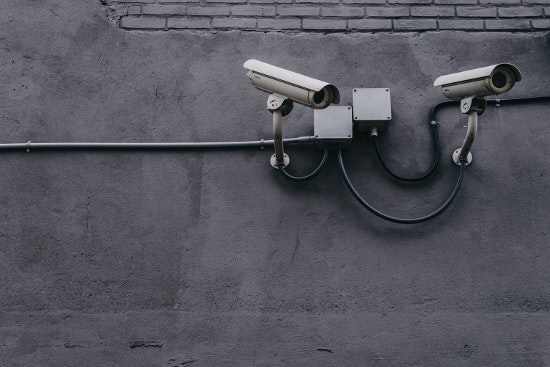All organizations, big or small, must establish adequate safety measures and maintain a safe working environment for their personnel. Your office’s amount of protection will vary according to its size, any unique threats it faces, and, of course, the available money.

There are specific critical fundamental, common-sense security procedures that you can readily and affordably adopt to protect your employees, equipment, and other assets.
1. Use a Monitored Alarm System as a First Step
An alarm system should be one of the first things considered when enhancing security; it serves as a massive deterrent to criminals. They may communicate emergency signals to a monitoring station through a mobile phone connection, a landline connection, or an internet connection. The monitoring station will then deploy police to the site as required. Additionally, some systems have a two-way speech intercom; when an alarm is triggered, the intercom immediately links the designated employee/business owner to the monitoring station. This assures that if an intruder gains access to your property, police will be notified immediately.
2. Protection of the Perimeter
Perimeter protection is a term that refers to physical security control measures that are established as a kind of access control to limit and minimize access from external sources. It is a critical asset for industrial, commercial, public, or private residential properties. It is often considered the first line of defense to ensure physical security for a facility or premises.
A crash-rated fence is a barrier that has been constructed to discourage humans or animals from crossing a border. You can have these installed around your building to increase security. Electric or non-electric fences are available. The majority of electric fences are employed to increase the security of sensitive regions such as prisons, military bases, and other high-security locations.
3. Provide Safety Training to Employees
Staff employees should get proper training on emergency protocols.
A two-way radio device may be useful for coordination and communication in such a circumstance. Additionally, it is critical to have a list of emergency numbers for the police, ambulance services, and fire department on hand and a safety handbook or pinned-up safety notice informing personnel what to do in an emergency.
4. Ensure that you Adhere to Provincial and Federal Rules
Each business should ensure that they adhere to local legislation regarding workplace safety and security. This will entail providing proper training, maintaining the facilities, posting emergency plans, stocking first-aid kits, conducting training, and establishing a joint health and safety committee for more influential organizations. Consult your local government website for further information on adhering to these critical rules implemented to keep people safe.
5. Make Efficient Use of Lighting
As most burglaries occur at night, security lights on the outside of your property may be an effective deterrent. It is likely to make robbers feel monitored and vulnerable while also enabling occupants to see who is approaching the building and flagging high-risk locations. The style of illumination you choose is determined by the level of danger, the type of monitoring currently in place, and the location of the premises. Passive infrared lighting is the most common kind of security lighting since it is cost-efficient to install and activates when someone enters its range of view.
Additionally!
Conduct a Risk Analysis
Assess whether regions of your facilities are susceptible to crime, accident, or natural catastrophe as soon as possible. If you operate from a house on a busy high street, window shutters may be a bright idea, while CCTV may be the ideal option if you are in a secluded area. Conduct research to discover potential weak points and provide a remedy promptly. It may be that an additional lock is required on a window or door, but even that may make a significant impact.
Employees Should be Involved in Safety Planning
Involving workers in the planning process in stills a feeling of responsibility for safety and security and promotes a safety culture in the workplace. Introduce the subject in company-wide meetings and get comments from workers on how you believe you can make their workplace safer and if they have any concerns. It’s critical to offer an anonymous reporting mechanism for workers who are uncomfortable speaking about a problem directly.
Conclusion
There are many security hazards and threats that might jeopardize your workplace. The five office security measures listed above are an excellent place to start when securing the safety of people and property in your workplace.
Offices may house a variety of valuable goods, ranging from computers to legal papers and cash. Not only can having an efficient security strategy safeguard the contents of your building from theft, but it may also help you save money on your insurance premiums.
